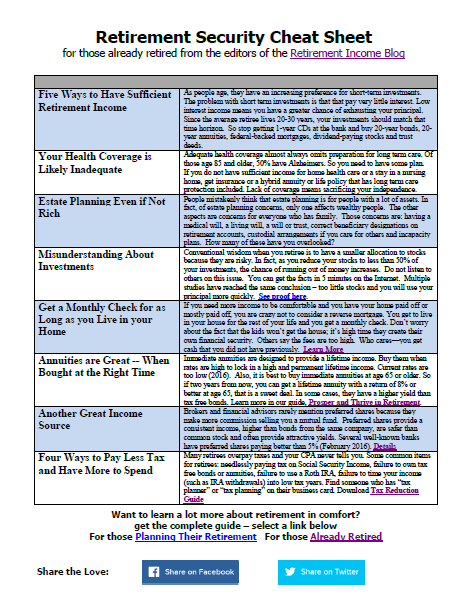As soon as the sluggish economy recuperates, a possible labor shortage might cause employers to entice their experienced employees to not retire or to come out of retirement. While such a scenario seems not likely with unemployment near 9%, but demographics make the US ripe for a labor shortage and ripe for a plan for retirement that might include earning income during retirement years. This could be considered a boon for all those planning to retire or previously retired - a method to beef up their retirement savings. If such a chance does arise, think about how you could take advantage.
Is working once more a part of your plan for retirement?
In case your forecasted retirement financial savings are less than acceptable, then intend to work a bit longer. But if you don't need to work, think about what might entice you to work - perhaps part-time. With the chance that employers will need to retain about-to-retire workers, you might be able to recommend an appropriate part-time position as an option for your plan for retirement while allowing your retirement portfolio to grow more without the need to take withdrawals.
Think about what level of working might permit you to accommodate your social plans - along with your spouse's - in retirement.
Delay your Plan for Retirement and Work a Little Longer
The potential advantages of continuing to work longer than you had planned are:
• Receiving a full pension while working part-time;
• A pay increase;
• Continuous company-subsidized health insurance at the same level as full-time
workers, and
• Receiving a partial pension while working part-time.
Tax issues to consider in your plan for retirement work
Working full-time and delaying Social Security benefits, will allow you to get a bigger benefit later (each year you delay your social security benefits increases them about 8%). Additionally, consider this plan for retirement: working just up to the social security threshold so that you get the best of both worlds as discussed below.
In the event you have not reached your full retirement age (age 66 for most), there is a limit to how much you are able to earn and nonetheless receive full Social Security payments. If you are younger than full retirement age during all of 2011, SSA will deduct $1 from your payments for each $2 you earned above $14,160.
If you reach full retirement age during 2011, SSA will deduct $1 out of your payments for every $3 you earn above $37,680 till the month you reach full retirement age. After age sixty-six, there is no deduction from your Social Security benefits. You can earn as much as you want from work and also collect full social security.
Social Security considerations in your plan for retirement
Obviously, if you're planning to work, you'll want to postpone beginning your Social Security at least 'til your full retirement age (as explained above) - and perhaps a bit longer. This may be a good plan for retirement because delaying the beginning of your retirement benefits will raise your month-to-month payments once you do start them.
Financial savings considerations in your plan for retirement
Maintaining income from work might not only relieve pressure to draw on retirement savings, but it is a plan for retirement that may permit you to make further retirement contributions. Your working earnings allow you to carry on contributing to retirement plans (401(k), etc.) and IRAs. If you can get 'employer matching' contributions, then even better.
Plan for retirement: How long should you work?
As our lifespan has increased, we've added more healthy years to our lives. So we are able to work longer but nonetheless fully retire while our activity levels are high. Studies also show that staying active increase longevity and mood.
While some are unfortunately unemployed and looking for retirement jobs, if you are employed, don't be surprised if your employer asks you to stay on the job.


Leave a Reply